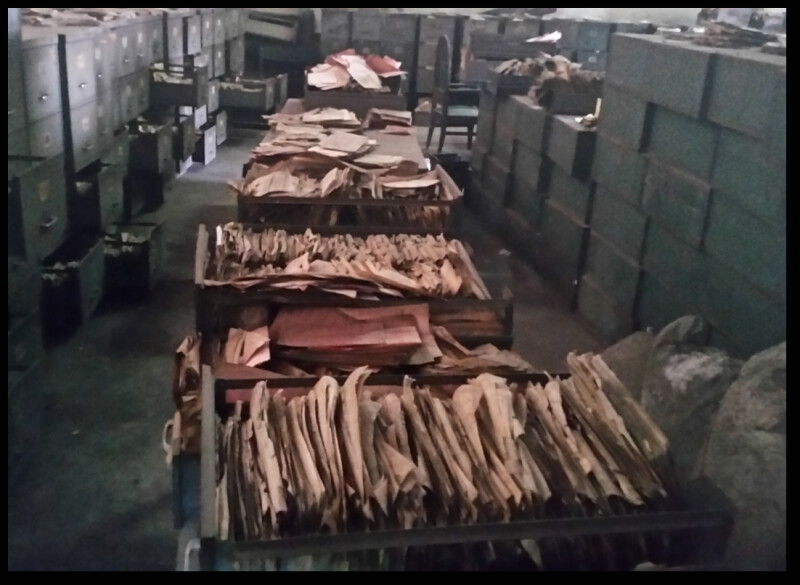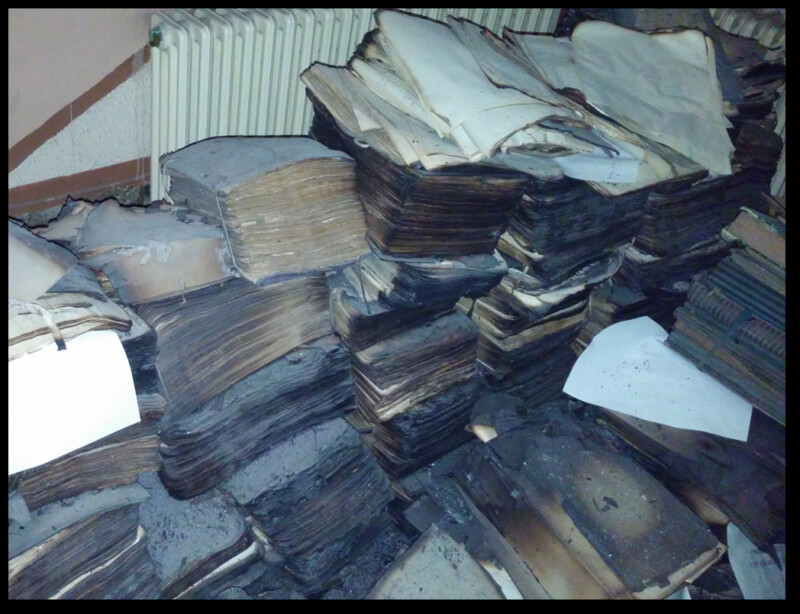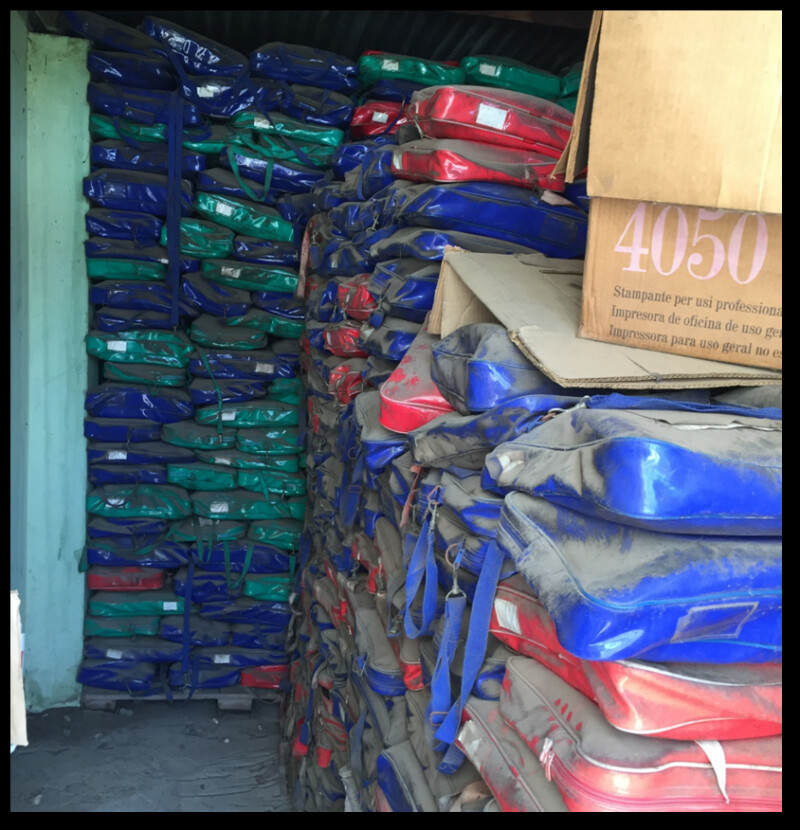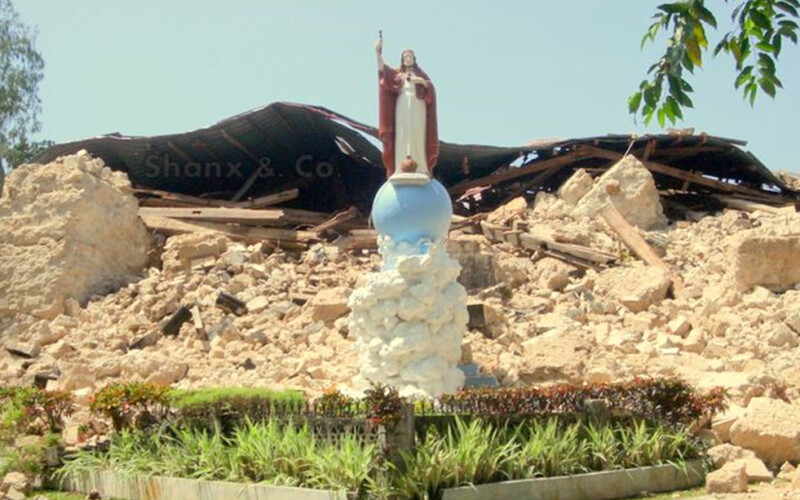Every year, the world loses priceless historical records, but one dedicated group of individuals is trying to do something about it.
David Ouimette manages FamilySearch's records content strategy efforts for the Asia Pacific area. Ouimette’s team is saving memories around the globe—historical documents that may be the only remaining witnesses to the existence of the individuals cloaked in their pages. It’s an ominous thought that untold numbers of records—and the stories they tell—are lost yearly.
The FamilySearch Record Content Strategy teams create their record strategies by prioritizing locations and identifying the record collections with the greatest genealogical value. Determining which record collections should be preserved first—based on how long the records will be available—is vitally important.
Choosing What to Preserve
“There are always records at risk,” Ouimette said, “so plans must be made.” With over 200 countries and principalities in the world, how do you prioritize which records to preserve first? That’s the perennial challenge for FamilySearch’s global records strategy team. They consider a number of variables to develop FamilySearch’s evolving strategy to preserve and create access to the world’s historical genealogical records.
The Five Greatest Threats to Historical Records
These irreplaceable documents include birth, christening, marriage, death, immigration, military, legal, and census records, and so on. Here are the major threats these historical documents face.
1. Poor Archival Storage Conditions

Too many records are decaying daily from mold, mildew, rain, sunlight, and insect infestation.
This photo from the National Archives in the Democratic Republic of Congo in Kinshasa emphasizes the greatest perils documents face, even in the modern era.
In the cement-block building where they are stored, these documents piled haphazardly high are bathed in sunlight and unkind weather from the roof and doorway. No special safeguards protect the records. “When an archivist opened a book in the room, the termites just scurried out trying to find a hole to hide in,” Ouimette reported while visiting the site.
2. Political Instability

Ouimette and his team have gone to archives in some countries and returned years later to find that the archives had been leveled—totally destroyed.
“When there is political unrest and instability, rioters will torch government buildings, and these buildings often have the best records in them,” he said. A photo of charred documents stacked in an archive in Sarajevo, Bosnia and Herzegovina, shows the damage that can be done.
A member of Ouimette’s team once returned to another archive a couple of years after rioting and found smoke damage staining the walls even years later.
3. Scheduled Destruction
Records in the National Archives of Ghana in Africa are purposely destroyed every decade. “As far as they’re concerned, the records are old and take up space,” Ouimette said. The Ghanaians use the census statistics for military conscription, which uses an evaluation of the population’s health based on mortality and fertility rates, he explained.

So after a decade, they have gleaned the information they feel they need, and they discard the originals without considering the long-term genealogical value of the records. “They are almost forced to destroy these records because they are going to do another census and won’t have room for [older] records,” Ouimette said.
An example of one of the largest destructions of valuable genealogical records, however, occurred with the British India records. “They took nominal censuses (a census that names every individual in the household), and like they did in England, destroyed them every decade, and not just in India but in surrounding countries too,” Ouimette said. When India gained its independence, it continued the same practice of destruction. India now digitizes good material from the censuses, but by law, the census is not available to the public and will eventually be destroyed.
“There is no long-term thinking about the historical value,” said Ouimette. “There is more concern about privacy today than about having a long-term record of people 200 or 300 years from now.”
4. Death of Oral Genealogical Informants.
Genealogy isn’t always stored in archives but can also be found in the memories of individuals. In African tribes, it is common for an elder in the village to be able to recite five generations of the tribes from memory, and some can recite seven or eight generations. As these African villages lose population and the youth move to the cities, sometimes no one is available to replace the oral genealogists. “When one of these elders dies,” Ouimette observed, “it’s like an archive has burned down.”
A timely gathering of oral genealogies is vital. FamilySearch visited one African tribal elder three or four times who could recite all descendants of the tribes’ members for generations. The team decided to return one last time to thank him. “When we approached his home, his family came out and told us he had died during the night. They said how thankful he had been for being able to transfer his life’s work before passing away,” Ouimette recalled.
At a Ghanaian village where FamilySearch representatives met with the tribal elders, the Africans spoke of the need to preserve these oral genealogies because young tribal members who become urbanized don’t learn about their heritage. “The elders said, ‘They forgot who they are. We essentially write their book—the book of their family. The book allows the younger generation to remember who they are by turning to their ancestry.’ It was so amazing to hear this tribal elder make this connection,” reflected Ouimette.
5. Substantial Risk of Natural Disaster
Floods, hurricanes, typhoons, fires, earthquakes, and such are natural disasters that compromise or completely ruin historical and genealogical records.
The Philippines, for example, faces a constant flooding danger. Ouimette told how he visited a village where the cement pillars showed darkened, high-water marks indicating the depths of previous floods. The village’s archivist, whose office was on the second floor above the watermarks, lamented the fact that a 1985 flood destroyed his records. A central archive in Manila regularly maintains a second copy of local records because they are often worn out from overuse. The archivist received a government grant to make copies of his records; however, his village office ran out of money before the task was completed.

Before 2013 Earthquake

After 2013 Earthquake
A Priceless Gift
While at this Philippines registry office, FamilySearch employees signed in to the FamilySearch website and found the archive’s missing records online. A FamilySearch team had microfilmed these records before the 1985 flood. Ouimette described the conversation that followed: “[We] said [to the archivist], ‘Did you know that there is a copy of everything you had before the flood?’ He was totally unaware. Many registrars had preceded him, and over time this was forgotten.”
The FamilySearch employees offered to give the registrar a copy. “He followed us down the stairs when we left, saying, ‘Are you sure? You are willing to do this for us?’” A few weeks later, FamilySearch sent him a free hard drive with a copy of the records he was missing.
How You Can Gain Access to Preserved Records
To accomplish this nearly impossible feat of preserving the world’s genealogical records, FamilySearch has over 200 camera teams in over 40 countries operating around the world on any given week. They capture hundreds of millions of digital images of historical records annually and make them freely searchable. To date, FamilySearch has published more than 5 billion images containing exponentially more searchable names.
If you are aware of any historical record collections in your community that need to be digitized, then you can contact us at archives@familysearch.org. Learn more about FamilySearch's archives here.
These records are accessible on FamilySearch.org. Try searching for your ancestors in FamilySearch's free database of historical records today! You never know what you might discover. Thanks to the efforts of record custodians, archivists, and volunteers, you could find something amazing!






